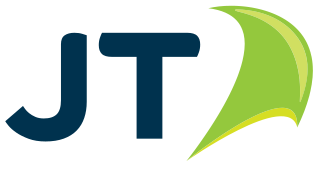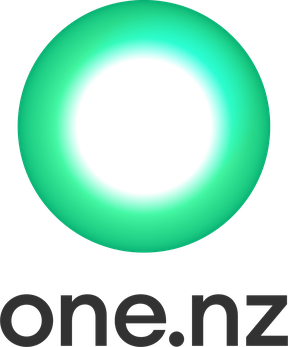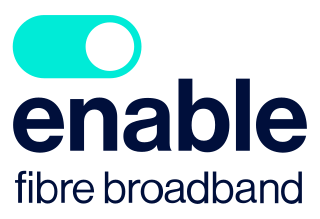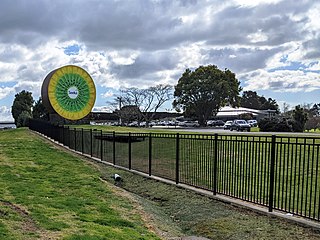Telecommunications in Ireland operate in a regulated competitive market that provides customers with a wide array of advanced digital services. This article explores Ireland's telecommunications infrastructure including: fixed and mobile networks, The voice, data and Internet services, cable television, developments in next-generation networks and broadcast networks for radio and television.
Local loop unbundling is the regulatory process of allowing multiple telecommunications operators to use connections from the telephone exchange to the customer's premises. The physical wire connection between the local exchange and the customer is known as a "local loop", and is owned by the incumbent local exchange carrier. To increase competition, other providers are granted unbundled access.
Telecommunications in New Zealand are fairly typical for an industrialised country.

Telecommunications in Australia refers to communication in Australia through electronic means, using devices such as telephone, television, radio or computer, and services such as the telephony and broadband networks. Telecommunications have always been important in Australia given the "tyranny of distance" with a dispersed population. Governments have driven telecommunication development and have a key role in its regulation.

Spark New Zealand Limited is a New Zealand telecommunications and digital services company providing fixed-line telephone services, mobile phone services, broadband, and digital technology services including cloud, security, digital transformation, and managed services. Its customers range from consumers to small - medium business, government agencies and large enterprise clients. It was formerly known as Telecom New Zealand until it was rebranded to Spark in 2014. It has operated as a publicly traded company since 1990. Spark's mobile network reaches 98% of New Zealand, with over 2.5 million mobile connections and 704,000 broadband connections

JT Group Limited is the parent company of several subsidiaries including Jersey Telecom Limited and Wave Telecom Limited. Jersey Telecom is the former monopoly operator in the Bailiwick of Jersey. JT provides telecommunications, Internet access and other services, mostly within the Channel Islands.
A naked DSL, also known as standalone or dry loop DSL, is a digital subscriber line (DSL) without a PSTN service — or the associated dial tone. In other words, only a standalone DSL Internet service is provided on the local loop.

One New Zealand Group Limited, stylised as One NZ, is a New Zealand telecommunications company. One NZ is the largest wireless carrier in New Zealand, accounting for 38% of the country's mobile share market in 2021.

TelstraClear Limited was New Zealand's second-largest telecommunications company before being acquired by Vodafone New Zealand in October 2012, previous to which it was a subsidiary of Australian company Telstra.

Orcon Limited is a New Zealand telecommunications company. It is New Zealand's fourth largest Internet service provider (ISP). In 2013 it had a 5% share of the fixed line market.

Free S.A.S. is a French telecommunications company, subsidiary of Iliad S.A. that provides voice, video, data, and Internet telecommunications to consumers in France. Its head office is in the 8th arrondissement of Paris and it is the second-largest ISP in France.
Openreach Limited is a company wholly owned by BT Group plc, that maintains the telephone cables, ducts, cabinets and exchanges that connect nearly all homes and businesses in the United Kingdom to various national broadband and telephone networks. It was established in 2006 following an agreement between BT and the UK's telecoms regulator, Ofcom, to implement certain undertakings, pursuant to the Enterprise Act 2002, to ensure that rival telecom operators have equality of access to BT's local network.
Sky Broadband is the consumer internet service offered by Sky UK in the United Kingdom.
Internet access is widely available in New Zealand, with 94% of New Zealanders having access to the internet as of January 2021. It first became accessible to university students in the country in 1989. As of June 2018, there are 1,867,000 broadband connections, of which 1,524,000 are residential and 361,000 are business or government.

The United Kingdom has been involved with the Internet throughout its origins and development. The telecommunications infrastructure in the United Kingdom provides Internet access to homes and businesses mainly through fibre, cable, mobile and fixed wireless networks, with the UK's 140-year-old copper network, maintained by Openreach, set to be withdrawn by December 2025.
The Ultra-Fast Broadband initiative is a New Zealand Government programme of building fibre-to-the-home networks covering 87% of the population by the end of 2022. It is a public–private partnership of the government with four companies with total government investment of NZ$1.5 billion.
10G-PON is a 2010 computer networking standard for data links, capable of delivering shared Internet access rates up to 10 Gbit/s over existing dark fiber. This is the ITU-T's next generation standard following on from GPON or Gigabit-capable PON. Optical fibre is shared by many subscribers in a network known as FTTx in a way that centralises most of the telecommunications equipment, often displacing copper phone lines that connect premises to the phone exchange. Passive optical network (PON) architecture has become a cost-effective way to meet performance demands in access networks, and sometimes also in large optical local networks for "Fibre-to-the-desk".

USTAv.FCC is the 2004 court case in which the Washington, D.C., Circuit Court of Appeals vacated the Federal Communications Commission's Triennial Review Order (TRO). The court's decision is based on the Telecommunications Act of 1996 section 251 which defines unbundled network elements (UNEs) for incumbent local exchange carriers and competitive local exchange carriers.

Enable NetworksLimited, trading as Enable, is a company based in Christchurch, New Zealand that installs a fibre broadband network in Christchurch and surrounding towns, and acts as a wholesaler for retail service providers (RSPs). It is fully owned by Christchurch City Holdings (CCHL), the investment arm of the Christchurch City Council.

Aongatete is a settlement and rural community in the Western Bay of Plenty District and Bay of Plenty Region of New Zealand's North Island. It is located on State Highway 2, south of Katikati and north-west of Ōmokoroa. The landscape consists of a long valley descending into the Tauranga Harbour.











